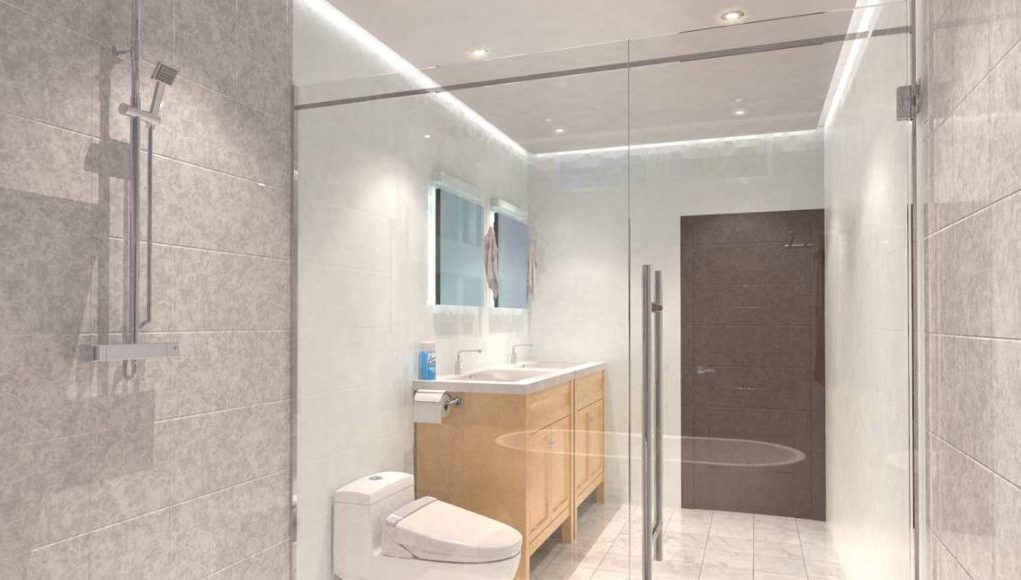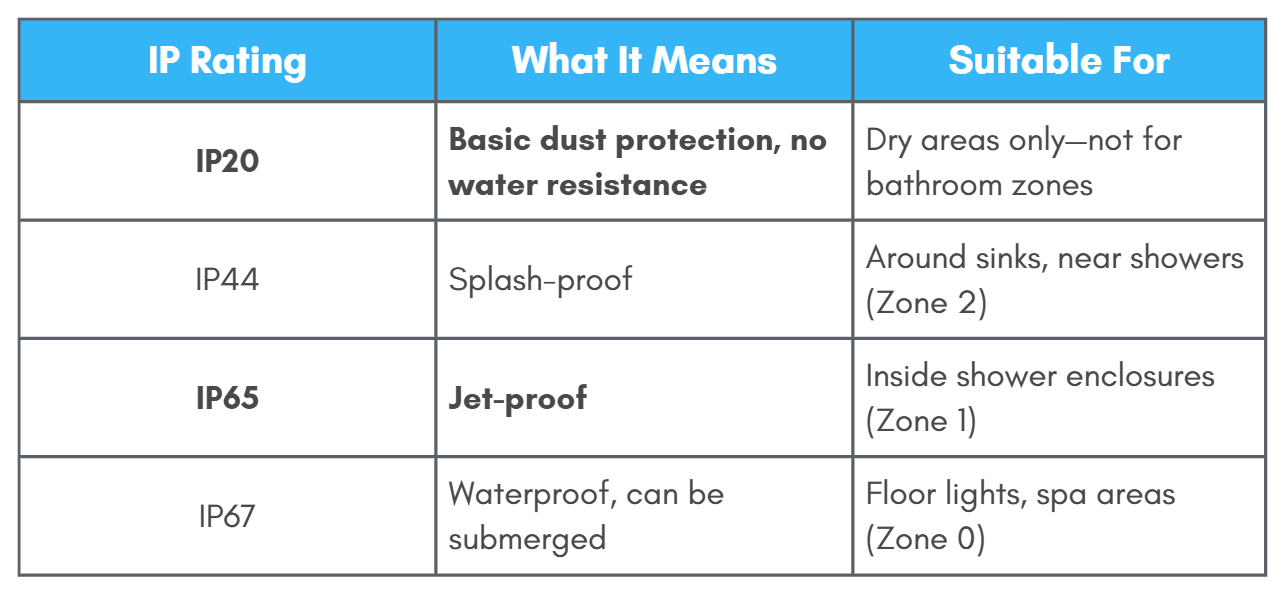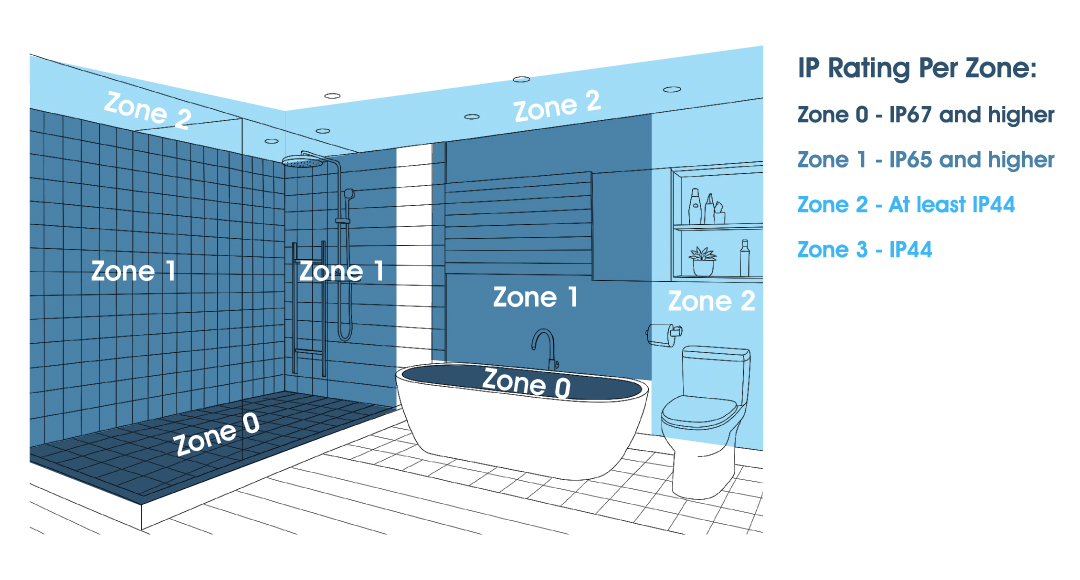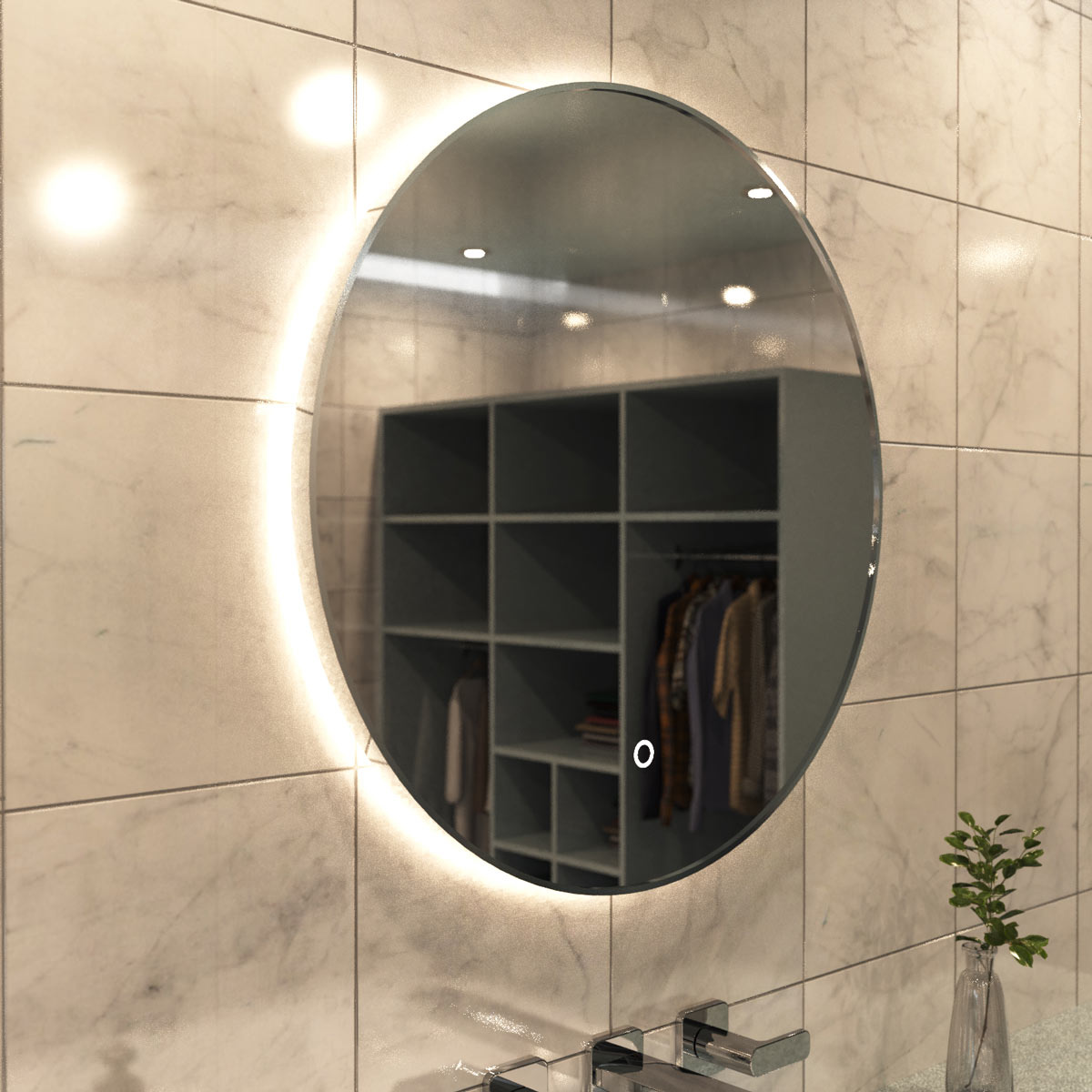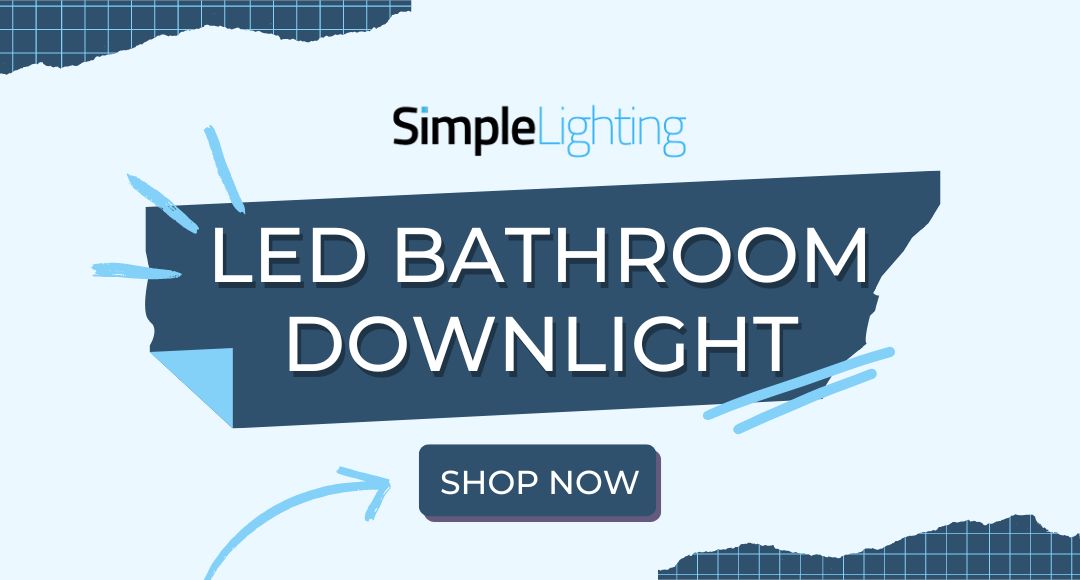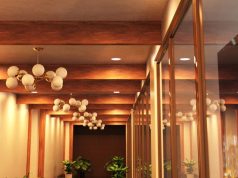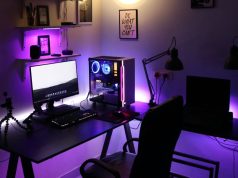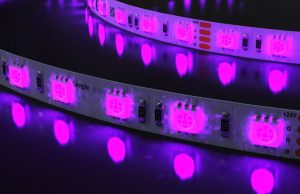Flash news: Electricity and water? They don’t go well together. That’s why lighting your bathroom goes beyond just avoiding scaring yourself at 3 AM with your own shadow in the mirror. It’s about safety, mood, and yes—getting that perfect selfie lighting without risking electrocution.
Bathrooms are wet, unpredictable places. You can’t simply mount the same lights you have in the living room in your bathroom, cover them with plastic, and then call it a day. The rules for lighting them are totally different from those of any other room in your home.
So, how do you properly light your bathrooms? What do you need to look out for and consider? Let’s break down what makes bathroom lighting so weirdly wonderful, how to keep it safe, and where to sneak in some style.
Why Bathroom Lighting is Unique
How is lighting a bathroom different from lighting other parts of the house? Well, for one obvious reason: water. The bathroom is a hub for steam, water jets, slippery surfaces, and electric fixtures all in one place. Unlike your bedroom, which doesn’t get blasted by water, your bathroom is a humid zone where lighting doesn’t just need to be both functional and attractive. It also needs to be waterproof.
And let’s be honest: your bathroom needs the proper love and care since it does a lot for you throughout the day. In the morning, it’s a high-tension zone where you’re rushing to get ready for the day, and in the evening, it’s a relaxation retreat where you soak yourself in the tub or the shower and pretend that you have your life together.
That’s why your bathroom lights need to be effective, look good, and ideally not electrocute you. If only you had a bathroom lighting guide to assist you. Oh, wait, this post is exactly that!
Understanding IP Ratings and Zones
“IP” stands for “Ingress Protection,” and it’s the number system that tells you how effective your light fixture is in protecting itself against solid objects (like dust) and water (like splashes or full-on jets). You’ll see this written as “IP44” or “IP67” and so on. The first digit is protection against solids. The second? Liquids.
The highest number for the solids is 6, while the highest for liquids is 8, meaning if you saw an IP rating of IP68, you’ve hit the jackpot.
Here’s a cheat sheet:
What about zones? Hope you’re not hungry, because we need you to think about your bathroom like a cake, and each zone is a slice. Each zone number is determined based on how close a light fixture is to water.
One thing to note, though, is that this isn’t just a suggestion—this is building code in many places.
Bathroom Lighting Zones:
- Zone 0: Inside the bath or shower tray itself. Thinking of adding shower floor lights? They must be low voltage (12V max) and at least IPx7. (NOTE: The solid protection doesn’t matter as long as the liquid protection is met.)
- Zone 1: Above the bath or shower tray up to 2.25m from the floor. Lights here need at least IPx4, but need IPx5 when water jets are present, so it’s better just to get the latter.
- Zone 2: A 60cm area outside the perimeter of Zone 1. Think around the shower area, sinks, and baths where water spray is likely but less intense. IPx4 or higher is needed.
- Zone 3 (Outside Zones): The areas beyond all the other zones. You can use regular fixtures here since there’s no specific IP rating required. But since it’s the bathroom and humidity will still be present, a lighting fixture with an IP44 rating is still a safe bet.
Pro tip: If you’re unsure, you can never go wrong with a higher IP rating. Better safe than… You know, calling an electrician mid-bath.
Task vs Ambient Lighting in Bathrooms
Bathroom selfies are still a thing in 2025. It might be a bit of a cringe at times, but you never know when you’ll take one to show off your makeup, outfit, hairstyle, new piercing, or just your radiant smile. That’s why it’s crucial to get your bathroom lighting on point.
Bathroom lighting isn’t just about water and wires. It’s also about vibes and visibility, and it needs two types of lights: ambient and task lighting. One for a general glow; the other is for serious business (hello, eyeliner).
Ambient Lighting
Your bathroom needs to have a “main” light. This is it. This light helps you see the bathroom, literally. You didn’t step on the cat last night, thanks to your ambient light. Your ambient light could be a flush-mount ceiling light, a recessed spotlight, or even a stylish waterproof pendant. Yes! As long as their IP rating matches the zone they’re in, you can use them.
Want a spa-like mood? Consider dimmable LED downlights. You can go from “bright and awake” to “I just want to sit here and hide from my responsibilities” with a single slider.
Task Lighting
You’ve got things to do in the bathroom, and they all need good lighting to be executed well. Plucking a rogue brow hair? Shaving? Putting on makeup for a video call? Precision matters here. You want light that’s focused, shadow-free, and close to natural daylight.
Overhead spotlights can cast shadows that make you look like you haven’t slept in six days. You don’t want that! Your best bet for bathroom task lighting? LED bathroom mirrors, especially those with vertical lights on both sides of the mirror.
Common Mistakes to Avoid
We get it—no one is perfect. And you aren’t too! But you won’t have any excuse for messing up your bathroom lighting. Not if you know what to avoid:
Mistake 1: Using regular lights in wet zones
“I bet that would look cool in the bathroom,” is a famous line from those who never check the IP rating of the fixture they’re getting. It doesn’t matter how cool the fixture is; if it’s not IP-rated (with the right rating), it does not belong in the bathroom. Ever. No exemptions.
Mistake 2: Relying on one overhead light
Sure, it can help you navigate and move around your bathroom, but it’s lacking. Don’t get this the wrong way. You NEED your overhead lights. But it’s an upgrade to layer your lighting: combine ambient, task, and even accent lighting if you’re feeling fancy.
Mistake 3: Ignoring colour temperature
Warm white light (2700K–3000K) creates a cosy vibe, sure, but it can distort the colours and details of everything in the bathroom, especially if you’re using it alone. White light is also great for visibility, but using only white lights, your bathroom might appear bland and uninviting.
Maximise the effects of layering your lights. For task lighting, use cool white lights, and then use warm or coloured lights to add depth to your bathroom. Plus, it’s more Instagram-worthy when you have lights layered in the space.
Mistake 4: Skipping dimmers
Seriously, why aren’t all bathroom lights dimmable? You don’t want surgical-bright lights during a 10 p.m. bubble bath. Dimmers give you control over the mood—and help save energy, too.
Simple Lighting has a wide range of high-quality dimmers that can fit into any bathroom interior.
LED Mirrors and Other Modern Additions
Once upon a time, your bathroom mirror was just… a mirror. Now? It can light up, defog itself, play music, and tell you the weather. (We’re not kidding.) Maybe in the future it might even be able to make toast. Who knows?
LED Mirrors
Want your bathroom to feel more “modern”? Upgrade to one of these bad boys. They offer soft, even lighting for grooming tasks with added features like adjustable colour temperatures, touch sensors, and anti-fog.
They also look sleek, save space, and reduce clutter since there’s no need for extra sconces or light bars as the lights are integrated with the mirror. Just don’t forget about the zones and IP rating when selecting your bathroom mirrors. They still need to follow those!
Sensor Lights
Afraid you might get electrocuted when switching the lights on/off with your hands wet? Chances are slim, but never zero. That’s why lights with motion sensors are great. You can just walk in and be bathed in light like the bathroom deity you are.
Backlit Cabinets
Storage meets subtle lighting. These are perfect for ambient lighting and can double as task lighting if placed above the sink. Look for soft-glow LEDs with cool tones.
RGB Lighting (If You Dare)
Is there such a thing as a nightclub shower? Now there is. And it’s in your bathroom. Add some RGB LED strips behind the bath, under your ceiling, or under floating vanities. It’s bold. It’s wild. It’s… unique?
Conclusion
Bathroom lighting shouldn’t be just an afterthought. It’s a necessity. Whether you’re going for “luxury hotel chic” or “practical with personality,” getting your lighting right makes a massive difference in how the space feels and functions.
Here’s a recap of your to-do list:
- Learn your bathroom zones
- Pick the proper IP ratings for safety
- Mix ambient and task lighting
- Avoid common mistakes people make (cause you’re better)
- Consider upgrades like LED mirrors and dimmable fixtures
Most of all? Have fun with it. Bathrooms are critical little spaces, but they’re where we prep for the day—and unwind from it.
So go ahead, light yours like you mean it.
Now that you’re an expert on bathroom lighting, you may want to improve how you light other parts of your home. Everything You Need to Know About Lighting Every Room of Your Home can help you.


